Summary | Excerpt | Reviews | Beyond the Book | Read-Alikes | Genres & Themes | Author Bio
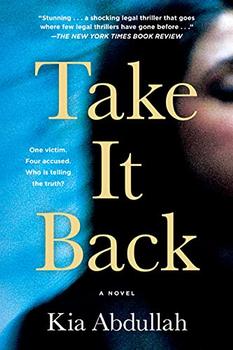
Critics' Opinion:
Readers' Opinion:
First Published:
Dec 2020, 304 pages
Paperback:
Jan 2022, 304 pages
 Book Reviewed by:
Book Reviewed by:
Kim Kovacs
Buy This Book
This article relates to Take It Back
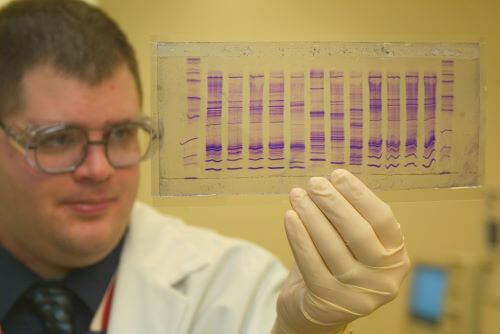 In Kia Abdullah's courtroom drama Take It Back, the prosecution relies on a forensic technique called DNA profiling. Also known as genetic fingerprinting, the process can be used to match bodily material found at a crime scene to a suspect, to identify a person's relatives, to determine one's risk of some genetic diseases and to identify dead bodies.
In Kia Abdullah's courtroom drama Take It Back, the prosecution relies on a forensic technique called DNA profiling. Also known as genetic fingerprinting, the process can be used to match bodily material found at a crime scene to a suspect, to identify a person's relatives, to determine one's risk of some genetic diseases and to identify dead bodies.
DNA — shorthand for deoxyribonucleic acid — is genetic material embedded in an organism's cells. It has been compared to a cookbook of recipes; it holds the instructions for making all the proteins in a being's body. 99.9% of a human's DNA is identical to every other person's, but the other 0.1% is unique. It's this tiny fraction of the genetic sequence that's used in DNA profiling.
To process DNA at a crime scene, a forensic scientist takes samples of any organic substance present, such as hair, semen or blood. Very little material is needed; a bit of saliva on a straw can provide enough DNA for analysis. Chemicals are added to the sample back at the lab to extract the DNA from any cells found. In analyzing the DNA, scientists only look at some limited areas of code where they expect to find variation, called target sequences. Often a process called a polymerase chain reaction (PCR) is used to create copies of sequences so that more extensive analysis can be performed.
The key to DNA profiling is finding patterns that repeat within the target sequences. These patterns, called short tandem repeats (STRs), vary in number from person to person. A DNA sequencer, or genetic analyzer, can be used to identify STRs and determine a genetic fingerprint.
A sample can then be obtained from another person (usually by swabbing the inside of the person's cheek to collect cells) and processed for comparison to the original material. In the case of a crime this would come from a suspect, while for determining identity or relationship the sample would be taken from a family member.
DNA was first used in a criminal case in 1986, in England, when geneticist Sir Alec Jeffreys was approached by police, who wanted him to help them identify the person who had raped and murdered two young women in Leicestershire. The police had a suspect, but Jeffreys found that his DNA didn't match that found at the crime scenes. They were eventually able to match the sample to a different man who was ultimately sentenced to life in prison for the attacks.
Governments subsequently began keeping databases of DNA samples, with the Federal Bureau of Investigation in the United States establishing their Combined DNA Index System (CODIS) in 1998. The FBI is responsible for how forensic work is done across the 200 labs authorized to submit DNA samples to CODIS, including the approval of the kits used to process the material. CODIS currently contains profiles of about 16 million samples from individuals who were arrested for crimes (even if they weren't convicted) and of 750,000 crime scenes.
A U.S. Customs and Border Protection chemist reading a DNA profile. Source: U.S. Customs and Border Protection via Wikimedia Commons
Filed under Medicine, Science and Tech
![]() This "beyond the book article" relates to Take It Back. It originally ran in January 2021 and has been updated for the
January 2022 paperback edition.
Go to magazine.
This "beyond the book article" relates to Take It Back. It originally ran in January 2021 and has been updated for the
January 2022 paperback edition.
Go to magazine.

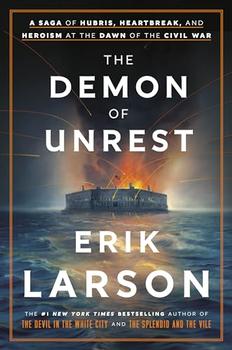
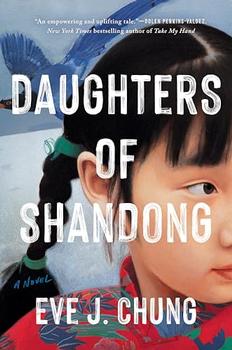
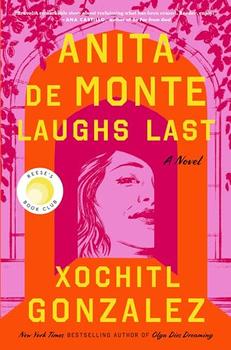
Your guide toexceptional books
BookBrowse seeks out and recommends the best in contemporary fiction and nonfiction—books that not only engage and entertain but also deepen our understanding of ourselves and the world around us.